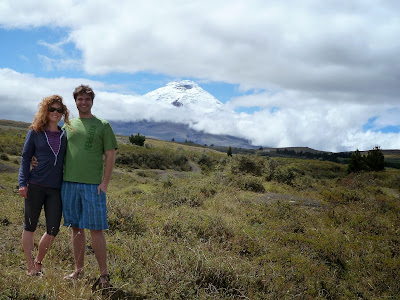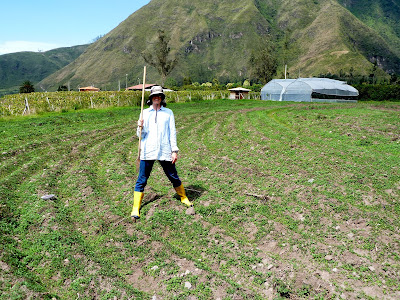Glimpse of Beautiful Ecuador

In Cotopaxi National Park --> Since arriving at the end of September, I had been almost exclusively on the farm in Ibarra, in northern Ecuador. Although I have loved being on the farm, dedicating my efforts and time to the activities of this peaceful milieu, I was happy to be able to explore some fantastic parts of Ecuador. My boyfriend, Alex, joined me for a nine-day adventure around central and eastern Ecuador. We traveled to Cotopaxi National Park, where the second highest peak in Ecuador is located, to Tena and La Selva Vida (the rainforest) and to Ba ñ os, a breath-taking area of waterfalls and green-gilded mountains. I found this snow-capped peak quite mesmerizing, as it appeared from and disappeared behind the clouds. Cotopaxi National Park is about one and a half hours from Quito, the capital, so it was our first stop. We stayed at a fabulous hostel in the middle of nowhere at 11,000 feet, where all our meals were provided. Even though we did not summit t...

